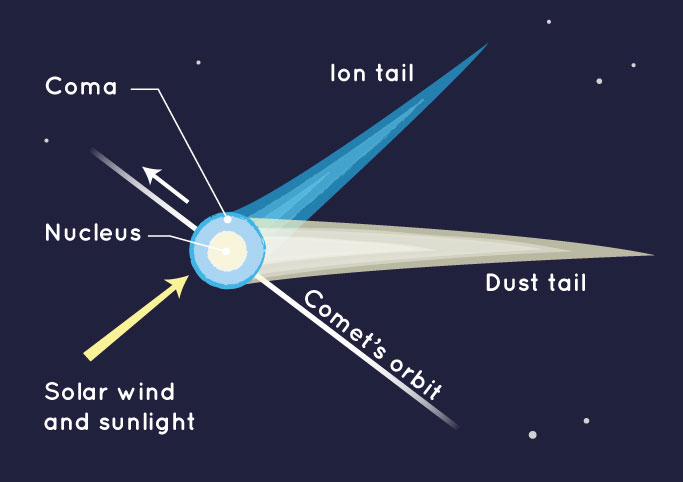Comet Lemmon over the High Tatras
Image Credit & Copyright: Tomáš Slovinský & Constantine Themelis
Explanation: Comet Lemmon putting on a show for cameras around the globe. Passing nearest to the Earth this week, the photogenic comet C/2025 A6 (Lemmon) is now extending two long tails : a blue ion tail and a white dust tail. The ion tail is pushed away from the Sun by the ever-present by ever-changing solar wind, and shows structure also created by how much gas is ejected at any one moment. It glows because it is ionized by high energy sunlight. The dust tail is pushed away from the comet by sunlight and shines by reflecting sunlight. The featured image is an enhanced composite of 50 exposures all taken two days ago from Mlynica, Slovakia. The mountains in the foreground are the High Tatras that partly separate Slovakia from Poland. Although Comet Lemmon is best visible in long camera exposures, the shedding ice ball has become faintly visible in northern skies even to unaided eyes through dark skies toward the west after sunset.
Comet Lemmon Beyond Lomnický Peak
Image Credit & Copyright: Robert Barsa
Explanation: Comet Lemmon has been putting on a show for cameras around the globe. Passing nearest to Earth in late October, the photogenic comet C/2025 A6 (Lemmon) sprouted two long and picturesque tails: a blue ion tail and a white dust tail. The ion tail is pushed away from the coma by the ever-present but ever-changing solar wind, at one point extending over 20 times the diameter of the full Moon -- as captured in this long-duration exposure. The shorter and wider dust tail is pushed away from the coma and shines by reflecting sunlight. The featured picture, captured two weeks ago, framed the comet behind Lomnický Peak of the High Tatra Mountains, home to the Slovakian Lomnický Stit Observatory. Comet Lemmon is now fading as it heads away from planet Earth. The huge shedding snowball will round the Sun later this week.


